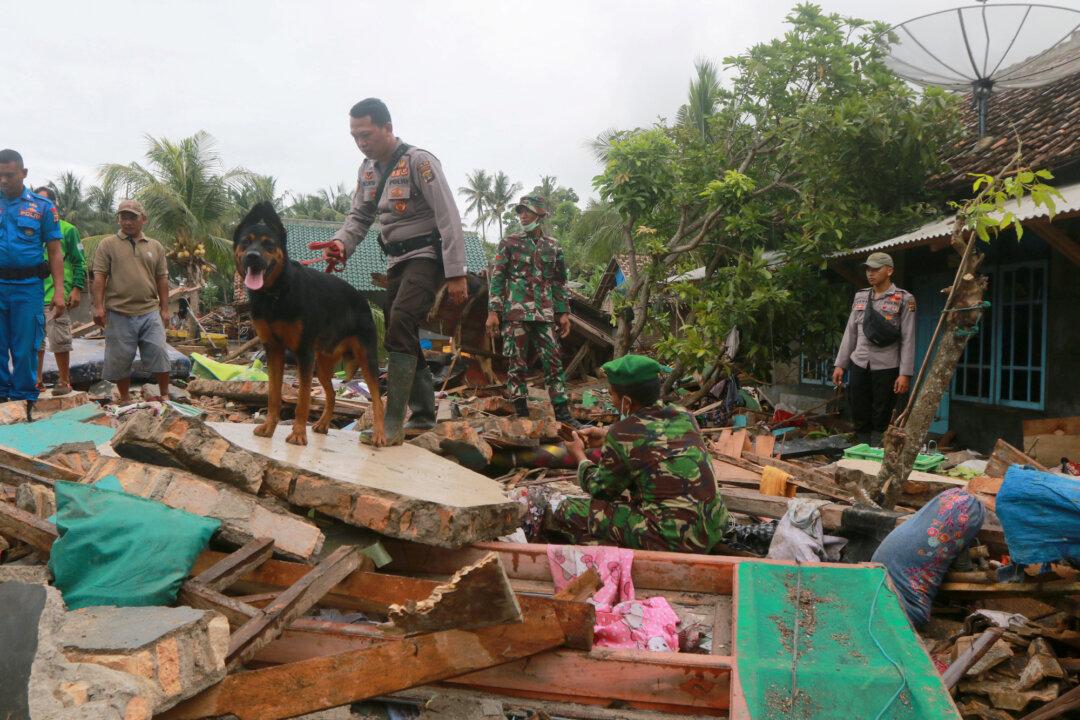LABUAN, Indonesia—Indonesian rescuers on Dec. 24 used drones and sniffer dogs to search for survivors along the devastated west coast of Java hit by a tsunami that has killed at least 429 people. More victims are expected to be uncovered as the search expands.
Thick ash clouds continued to spew from Anak Krakatau, a volcanic island where a crater collapse at high tide on Dec. 22 sent waves smashing into coastal areas on both sides of the Sunda Strait between the islands of Sumatra and Java.





